Maximizing Your Exit Velo by Age A Comprehensive Guide to Improving Your Baseball Performance
In the world of baseball, exit velocity has become a crucial metric for evaluating a player’s power and hitting efficiency. Exit velo by age provides insights into how players of different age groups perform and develop over time. Exit velocity, the speed at which the ball leaves the bat after contact, is a key indicator of a player’s ability to generate hard-hit balls and achieve solid contact. Understanding and improving exit velocity can significantly impact a player’s performance, making it a fundamental aspect of both player development and game strategy.
Measuring exit velocity is essential because it provides valuable insights into how well a player is striking the ball. High exit velocity often correlates with better contact quality, greater distance on batted balls, and overall offensive effectiveness. By quantifying this aspect of hitting, coaches and players can identify strengths and areas for improvement, leading to more focused training and better game results. Without accurate measurements, players might miss opportunities to enhance their skills and optimize their performance.
This article aims to provide a comprehensive guide to understanding and improving exit velocity. We will explore the key factors influencing exit velocity, such as bat speed, swing mechanics, and mental approach. Additionally, we’ll delve into methods for measuring exit velocity and discuss benchmarks for different age groups to help players set realistic goals. Whether you’re a young athlete or an experienced player, this guide will offer practical strategies to elevate your game and achieve peak performance at the plate.
Understanding Exit Velocity
Definition of Exit Velocity
Exit velocity is a term used in baseball to describe the speed at which the ball leaves the bat after contact. It is a critical metric for assessing the quality of a player’s hit. Higher exit velocities typically indicate that the ball was struck with more force, resulting in harder hits and potentially longer distances. This measure is essential for players and coaches as it directly correlates with the effectiveness of a hitter’s performance. By understanding and improving exit velocity, players can enhance their hitting power, leading to more successful at-bats and better overall offensive outcomes.
Differences Between Bat Speed, Ball Speed, and Exit Velocity
To fully grasp exit velocity, it’s important to distinguish it from other related terms such as bat speed and ball speed.
Bat Speed: Bat speed refers to the speed at which the bat travels through the strike zone before making contact with the ball. It is a crucial component of generating high exit velocity, as faster bat speeds generally result in harder hits. However, bat speed alone does not determine exit velocity. Proper mechanics and timing are also essential to maximize the impact.
Ball Speed: Ball speed, often referred to in the context of pitch velocity, is the speed at which the ball travels toward the batter. While this is important for pitchers, it is distinct from exit velocity. For hitters, the focus is on how fast the ball leaves the bat after making contact, rather than how fast it arrives.
Exit Velocity: Exit velocity is the resulting speed of the ball immediately after it makes contact with the bat. It is influenced by a combination of bat speed, the force of the swing, the point of contact, and the hitter’s mechanics. High exit velocity is indicative of good contact quality and is a desirable outcome for hitters aiming to improve their offensive performance.
Importance of Efficient Swing Mechanics in Maximizing Exit Velocity
Efficient swing mechanics play a vital role in maximizing exit velocity. Proper mechanics ensure that the hitter can transfer the maximum amount of energy from the body to the bat and ultimately to the ball. Several key components contribute to efficient swing mechanics:
Lower Body Engagement: The lower body, including the legs and hips, provides the f
oundation for a powerful swing. Proper weight transfer from the back foot to the front foot and the rotation of the hips generate significant torque, contributing to increased bat speed and exit velocity.
Core Strength and Stability: The core muscles are crucial for maintaining balance and stability during the swing. A strong core allows hitters to rotate their torso effectively, further enhancing the power behind their swing. Engaging the core correctly ensures that the energy generated by the lower body is efficiently transferred to the upper body and bat.
Hand and Wrist Action: The hands and wrists play a critical role in controlling the bat and making precise contact with the ball. Quick and powerful wrist action can significantly boost bat speed. Proper grip and hand positioning ensure that the hitter can adjust to different pitches and make solid contact consistently.
Head Positioning and Vision: A steady head and sharp vision are essential for tracking the ball and making accurate contact. Minimizing head movement helps maintain balance and focus, allowing hitters to react quickly and make better decisions at the plate.
In conclusion, understanding the nuances of exit velocity, bat speed, and ball speed is essential for any baseball player looking to improve their hitting performance. Efficient swing mechanics, incorporating the lower body, core, hands, and head, are fundamental to maximizing exit velocity. By focusing on these elements, players can enhance their ability to generate powerful hits, leading to greater success on the field.
Factors Affecting Exit Velocity
Bat Speed
Definition and Its Role in Determining Exit Velocity
Bat speed refers to the speed at which the bat travels through the strike zone during a swing. It is a critical factor in determining exit velocity because the faster the bat moves, the more force it can impart to the ball upon contact. Higher bat speed generally translates to greater exit velocity, leading to harder-hit balls that travel further.
How Bat Speed Influences Exit Velocity
The influence of bat speed on exit velocity is direct and substantial. When a hitter swings the bat at a higher speed, the energy transferred to the ball increases, resulting in a higher exit velocity. This increase in speed not only boosts the distance the ball can travel but also enhances the likelihood of solid contact. Faster bat speed allows the hitter to catch up to pitches more effectively, making it easier to drive the ball with authority. Therefore, developing and maintaining high bat speed is crucial for hitters aiming to maximize their exit velocity and overall hitting performance.
Swing Mechanics
Key Mechanical Aspects of a Powerful Swing
Efficient swing mechanics are essential for generating maximum bat speed and, consequently, high exit velocity. Some key aspects include:
Lower Body Engagement: Proper use of the legs and hips provides the foundation for a powerful swing. Initiating the swing with a strong push from the back leg and rotating the hips allows the hitter to generate significant torque and bat speed.
Core Rotation: The core muscles play a vital role in transferring energy from the lower body to the upper body. A strong and stable core helps maintain balance and facilitates a smooth, powerful rotation, contributing to increased bat speed and exit velocity.
Hand and Wrist Action: Quick and efficient movement of the hands and wrists is crucial for controlling the bat and making solid contact with the ball. Proper hand positioning and wrist action can enhance bat speed and precision.
Head Stability: Minimizing head movement helps maintain focus on the ball and ensures better balance during the swing. A steady head position allows the hitter to track the ball more accurately and make timely, solid contact.
Importance of Leveraging the Whole Body in the Swing
Leveraging the entire body in the swing is essential for maximizing exit velocity. The kinetic chain, which involves the coordinated movement of the legs, hips, core, and upper body, allows the hitter to generate and transfer maximum energy to the bat. Each component of the body contributes to the overall power and efficiency of the swing. Neglecting any part of this chain can result in a loss of bat speed and reduced exit velocity. Therefore, comprehensive training that focuses on developing strength, flexibility, and coordination across the entire body is vital for hitters aiming to enhance their exit velocity.
Mental Approach
Role of Approach and Mindset in Hitting Performance
The mental approach to hitting is as important as the physical mechanics. A hitter’s mindset can significantly influence their performance and exit velocity. A positive, focused, and competitive approach can help hitters stay calm and composed at the plate, allowing them to execute their swing mechanics effectively. Conversely, a negative or anxious mindset can lead to tension and poor decision-making, negatively impacting bat speed and contact quality.
Impact of Swing Intent and Focus on Exit Velocity
Swing intent and focus play crucial roles in determining exit velocity. Hitters who approach each at-bat with the intent to make hard contact and drive the ball are more likely to achieve higher exit velocities. This aggressive yet controlled mindset helps hitters maintain a high level of bat speed and energy transfer during their swing. Focus on specific goals, such as hitting line drives or targeting particular parts of the field, can also enhance a hitter’s ability to generate high exit velocity. Training the mind to stay engaged and purposeful at the plate is essential for maximizing hitting performance.
In summary, factors such as bat speed, swing mechanics, and mental approach are critical in determining exit velocity. By focusing on these elements, hitters can improve their ability to generate powerful, high-velocity hits, leading to better performance on the field.
Measuring Exit Velocity
Tools for Measurement
Overview of Radar Guns and Other Tools
To accurately measure exit velocity, various tools and technologies are employed, with radar guns being the most common. Radar guns work by emitting radio waves that bounce off the moving baseball, allowing the device to calculate the speed at which the ball travels after being hit. These devices are widely used in professional and amateur baseball due to their accuracy and ease of use.
Other tools for measuring exit velocity include high-speed cameras and motion sensors. High-speed cameras capture detailed footage of the ball and bat interaction, which can be analyzed to determine exit velocity. Motion sensors, often attached to the bat or the hitter’s body, provide additional data on swing mechanics and speed, offering a comprehensive view of the factors contributing to exit velocity.
Differences Between Devices and Methods
The choice of measurement device can impact the accuracy and consistency of exit velocity readings. Radar guns are highly reliable for measuring ball speed, but their accuracy can be affected by the angle and distance from the point of contact. High-speed cameras provide precise measurements and detailed insights into swing mechanics, but they require advanced software and expertise to interpret the data accurately.
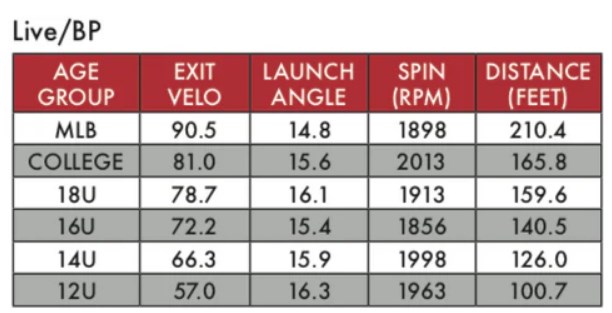
Motion sensors offer real-time feedback and a wealth of data on the hitter’s biomechanics, making them useful for in-depth analysis and training. However, they may not be as precise as radar guns in measuring the exact speed of the ball. Understanding the strengths and limitations of each device is crucial for selecting the most appropriate tool for measuring exit velocity in different contexts.
Variables Affecting Measurements
Type of Ball Used (Game-Ready vs. Practice Balls)
The type of baseball used in measuring exit velocity can significantly impact the results. Game-ready balls, which are typically harder and more tightly wound, tend to produce higher exit velocities compared to practice balls. Practice balls, often softer and less dense, can result in lower exit velocities due to their reduced ability to transfer energy upon contact. For consistent and accurate measurements, it is essential to use game-ready balls that mimic the conditions of actual gameplay.
Impact of the Ball’s Placement (Tee Work vs. Pitched Balls)
The method of ball placement also affects exit velocity measurements. Tee work, where the ball is stationary on a tee, provides a controlled environment that allows for consistent and repeatable measurements. However, it may not fully replicate the dynamic conditions of a live pitch. Pitched balls, whether from a pitching machine or a live pitcher, introduce variables such as pitch speed, spin, and movement, which can influence exit velocity. While tee work is useful for baseline measurements, incorporating pitched balls into the assessment provides a more realistic evaluation of a hitter’s performance.
Differences in Exit Velocity Based on Bat Material (Aluminum, Wooden, Composite)
The material of the bat used in measuring exit velocity can lead to variations in the results. Aluminum bats, known for their light weight and high durability, typically generate higher exit velocities due to their ability to flex and create a “trampoline effect” upon contact. Wooden bats, although heavier and less forgiving, provide a more traditional feel and are often used to evaluate a hitter’s true power and technique. Composite bats, which combine elements of both aluminum and wood, offer a balance of durability and performance, with exit velocities generally falling between those of aluminum and wooden bats.
For accurate and comparable exit velocity measurements, it is important to consider the type of bat used. Coaches and scouts often prefer wooden bats for assessments, as they provide a more consistent measure of a player’s hitting ability across different levels of play.
In conclusion, measuring exit velocity involves various tools and methods, each with its own set of advantages and limitations. Factors such as the type of ball used, the placement of the ball, and the material of the bat all play a significant role in the accuracy and consistency of exit velocity measurements. By understanding and accounting for these variables, players and coaches can obtain more reliable data to guide training and performance improvements.
Exit Velocity by Age
Elite Level Exit Velocity Averages
Understanding the benchmarks for elite exit velocity by age is crucial for evaluating and setting performance goals for young players. As players grow and develop, their physical strength and skill level typically increase, leading to higher exit velocities.
Breakdown of Exit Velocity by Age
- Ages 8-10: At this stage, young players are just beginning to develop their hitting mechanics and physical strength. Elite exit velocities range between 46-55 mph. Achieving these speeds indicates a solid foundation in swing mechanics and power.
- Ages 11-13: As players enter their pre-teen years, their coordination and strength improve. Elite exit velocities for this age group range from 56-65 mph. This improvement is often due to better understanding and implementation of proper swing techniques.
- Ages 14-15: During early high school years, physical development accelerates. Elite exit velocities typically range from 75-80 mph. Players who reach these speeds demonstrate advanced hitting mechanics and increased physical power.
- Junior Varsity (Ages 15-16): High school JV players show significant growth, with elite exit velocities around 80 mph with aluminum bats and 75 mph with wooden bats. This period often involves focused strength training and refined hitting techniques.
- Varsity (Ages 15-18): Varsity players, often the most skilled in high school, achieve exit velocities of 90 mph with aluminum bats and 85 mph with wooden bats. This level of performance is indicative of near-collegiate readiness.
- College Level: At the collegiate level, players typically reach elite exit velocities of 95 mph with aluminum bats and 90 mph with wooden bats. These athletes have undergone extensive training and possess high levels of skill and physical conditioning.
- Professional Level: Professional players exhibit the highest exit velocities, often exceeding 100 mph with wooden bats. These players have honed their skills and physical abilities to the highest levels through years of dedicated practice and competition.
Examples of Elite Exit Velocities in Various Age Groups
- A 10-year-old achieving an exit velocity of 52 mph demonstrates exceptional potential and advanced mechanics for their age.
- A 15-year-old with an exit velocity of 80 mph is likely one of the top hitters on their team and a prospect for higher levels of play.
- College players reaching 95 mph exit velocities are strong candidates for professional scouting.
Average Exit Velocity by Age
While elite benchmarks provide goals for top performers, understanding the average exit velocities by age offers a broader perspective on player development.
Typical Exit Velocity Ranges for Different Age Groups
- Age 10: Average exit velocities range around 50-52 mph. Most players at this age are developing basic hitting skills and strength.
- Age 11: Typical exit velocities are about 53-54 mph. Slight improvements are seen as players gain better control and power.
- Age 12: Average exit velocities increase to 57-59 mph, reflecting enhanced coordination and strength.
- Age 13: Players usually achieve exit velocities around 61-63 mph, with further refinement in their mechanics and physical development.
- Age 14: Exit velocities typically range from 65-68 mph, indicating substantial growth in hitting skills and strength.
- Age 15: Average velocities of 70-71 mph show significant advancement in physical power and technique.
- Age 16: Players generally reach 74 mph, demonstrating continued development and strength gains.
- Age 17: Typical exit velocities are around 76-77 mph, showcasing high-level high school performance.
- Age 18: Average velocities of 79 mph indicate readiness for collegiate play.
- College: College players often average around 80 mph, reflecting high levels of skill and conditioning.
- Professional: Professionals average about 86 mph, showcasing elite hitting capabilities developed through extensive training and experience.
Comparison of Youth, High School, College, and Professional Levels
- Youth (Ages 8-13): Focus on developing fundamental skills and building physical strength. Exit velocities gradually increase as players grow and refine their techniques.
- High School (Ages 14-18): Significant physical development and intensive training lead to substantial increases in exit velocity. Players begin to separate into elite and average categories.
- College: Collegiate players demonstrate advanced skills and conditioning, with exit velocities reflecting years of dedicated training.
- Professional: Professionals exhibit the highest exit velocities, achieved through peak physical conditioning and elite-level skills honed over years of competition.
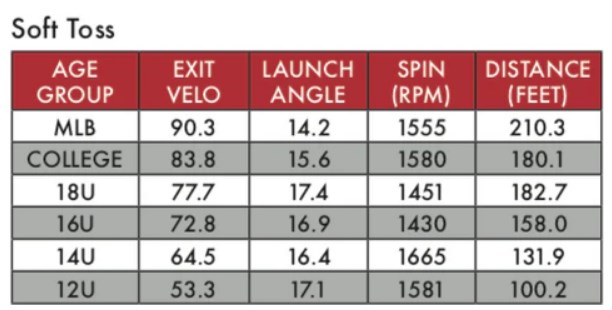
Understanding these benchmarks helps players and coaches set realistic goals and track progress effectively, ensuring that training and development are aligned with the standards of competitive baseball.
Exit Velocity Off the Tee
Explanation of Exit Velocity Measurements Off the Tee
Exit velocity off the tee is a crucial metric for assessing a hitter’s raw power and swing mechanics in a controlled environment. When measuring exit velocity off the tee, the ball is placed on a stationary tee, allowing the hitter to focus solely on their swing without the variables introduced by a live pitch. This method provides a consistent baseline for evaluating a player’s ability to generate bat speed and solid contact. By isolating the swing mechanics, hitters can identify areas for improvement and track their progress over time.
Comparison with Live Batting Practice and Front Toss
While measuring exit velocity off the tee offers valuable insights, it is essential to compare these measurements with those obtained from live batting practice and front toss to get a comprehensive understanding of a hitter’s performance.
Live Batting Practice: In live batting practice, hitters face pitches delivered by a coach or machine, simulating game conditions. Exit velocities in this context are often higher than those off the tee due to the added energy from the pitched ball. However, this method introduces variables such as pitch speed, movement, and timing, which can affect consistency. Measuring exit velocity during live batting practice helps assess a hitter’s ability to translate their raw power into game situations.
Front Toss: Front toss involves a coach or teammate tossing the ball underhand from a short distance, providing a more controlled environment than live batting practice but still requiring the hitter to time their swing. Exit velocities in front toss are generally higher than those off the tee but lower than live batting practice. This method strikes a balance between the consistency of tee work and the dynamic nature of live pitches, offering a useful intermediate assessment.
Tips for Achieving Optimal Exit Velocity Off the Tee
Achieving optimal exit velocity off the tee requires a combination of proper mechanics, physical conditioning, and mental focus. Here are some tips to help hitters maximize their exit velocity:
1. Focus on Mechanics:
- Stance and Grip: Ensure a balanced stance with feet shoulder-width apart and a firm grip on the bat. Proper alignment and grip provide a stable foundation for generating power.
- Load and Stride: Use a smooth and controlled load, shifting weight to the back leg, followed by a short, powerful stride toward the ball. This sequence helps build momentum and transfer energy into the swing.
- Hip Rotation: Engage the hips by rotating them forcefully as the swing begins. Hip rotation generates torque, contributing significantly to bat speed and exit velocity.
- Hand Path: Keep the hands inside the ball and follow a direct path to contact. Avoid casting or looping the bat, which can reduce bat speed and impact quality.
2. Strength and Conditioning:
- Core Strength: Develop core muscles through exercises such as planks, Russian twists, and medicine ball throws. A strong core provides stability and power for the swing.
- Lower Body Strength: Incorporate leg exercises like squats, lunges, and deadlifts to build lower body strength. Powerful legs contribute to a strong base and effective weight transfer.
- Flexibility and Mobility: Maintain flexibility in the hips, shoulders, and wrists through stretching and mobility exercises. Flexibility allows for a full range of motion and efficient energy transfer.
3. Mental Approach:
- Focus and Visualization: Visualize the swing and the desired outcome before stepping up to the tee. Mental preparation can enhance focus and execution.
- Consistency and Repetition: Practice regularly to build muscle memory and consistency in the swing. Repetition helps engrain proper mechanics and timing.
- Relaxation and Confidence: Stay relaxed and confident at the plate. Tension can hinder swing mechanics and reduce bat speed. Trust your training and approach each swing with confidence.
By combining these tips with regular practice and a focus on continuous improvement, hitters can achieve optimal exit velocity off the tee, providing a strong foundation for success in more dynamic hitting situations.
Strategies to Increase Exit Velocity
Mechanics Improvement
Key Mechanical Adjustments for Maximizing Exit Velocity
To maximize exit velocity, hitters need to make specific mechanical adjustments that enhance their swing efficiency and power. Here are some crucial adjustments:
- Stance and Setup: Start with a balanced stance, feet shoulder-width apart, and knees slightly bent. Ensure the grip on the bat is firm but relaxed, allowing for quick hand movements.
- Load and Stride: A smooth and controlled load, where weight shifts to the back leg, is essential. Follow this with a short, powerful stride toward the ball, maintaining balance and stability.
- Hip Rotation: Engage the hips by rotating them forcefully as the swing begins. This rotation generates significant torque, contributing to higher bat speed and exit velocity.
- Hand Path and Barrel Control: Keep the hands inside the ball and follow a direct path to contact. Ensure the bat’s barrel is on plane with the pitch early and stays through the hitting zone as long as possible.
Importance of Refining Swing Technique and Bat Control
Refining swing technique and bat control is critical for consistent performance and increased exit velocity. Proper technique ensures efficient energy transfer from the body to the bat, maximizing the power behind each swing. Practicing these mechanics regularly helps develop muscle memory, leading to more reliable and powerful contact. Additionally, focusing on bat control allows hitters to make adjustments to different pitch locations and speeds, improving their ability to drive the ball with authority.
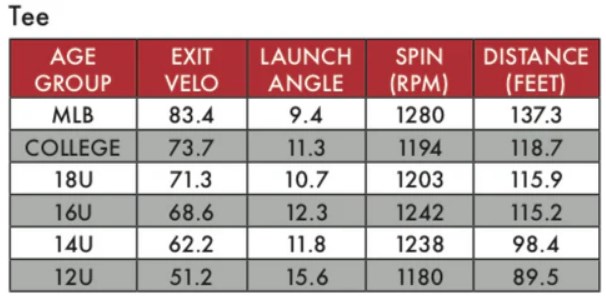
Mental Approach and Mindset
Techniques for Developing a Strong Mental Approach
A strong mental approach is as crucial as physical mechanics in achieving high exit velocity. Here are some techniques:
- Visualization: Before stepping up to the plate, visualize the swing and the desired outcome. This mental rehearsal prepares the mind and body for successful execution.
- Positive Self-Talk: Encourage yourself with positive affirmations and focus on strengths rather than weaknesses. This boosts confidence and reduces negative thoughts that can hinder performance.
- Routine and Consistency: Develop a pre-swing routine to create a sense of familiarity and control. Consistent routines help maintain focus and reduce anxiety.
How Mindset Affects Performance and Exit Velocity
Mindset plays a significant role in performance and exit velocity. A confident and focused mindset allows hitters to stay relaxed and execute their mechanics effectively. Conversely, a negative or anxious mindset can lead to tension, disrupting swing mechanics and reducing bat speed. By maintaining a positive and determined mindset, hitters can optimize their physical abilities and achieve higher exit velocities.
Physical Training
Role of Strength and Conditioning in Improving Exit Velocity
Strength and conditioning are vital components of improving exit velocity. A well-rounded training program enhances overall body strength, power, and flexibility, all of which contribute to a more powerful swing.
Recommended Exercises and Training Regimens
- Core Exercises: Planks, Russian twists, and medicine ball throws strengthen the core, providing stability and power for the swing.
- Leg Workouts: Squats, lunges, and deadlifts build lower body strength, crucial for generating a solid base and effective weight transfer.
- Upper Body Workouts: Bench presses, pull-ups, and shoulder presses develop the upper body strength needed for powerful swings.
- Flexibility and Mobility: Incorporate stretching and mobility exercises for the hips, shoulders, and wrists to maintain a full range of motion and efficient energy transfer.
Relaxation and Performance
Importance of Staying Relaxed and Focused
Staying relaxed and focused is essential for optimal performance and exit velocity. Tension in the body can hinder swing mechanics, reducing bat speed and power. A relaxed state allows for smoother movements and better control, leading to more effective swings.
Techniques for Reducing Performance Anxiety and Tension
- Breathing Exercises: Practice deep breathing techniques to calm the mind and body before and during at-bats. Controlled breathing helps reduce anxiety and maintain focus.
- Mindfulness and Meditation: Engage in mindfulness practices and meditation to develop a calm and focused mindset. These techniques help manage stress and improve concentration.
- Routine and Familiarity: Establish a consistent pre-swing routine to create a sense of familiarity and control. This routine helps maintain focus and reduce performance anxiety.
By combining mechanical adjustments, a strong mental approach, targeted physical training, and relaxation techniques, hitters can significantly increase their exit velocity, leading to better performance at the plate.
Exit Velocity for Different Player Levels
Youth Baseball
Focus on Developing a Love for the Game
At the youth level, fostering a love for baseball is paramount. While exit velocity can be a useful metric, it should not overshadow the enjoyment and passion for the game. Coaches and parents should prioritize creating a fun and engaging environment that encourages young players to develop their skills without the pressure of high performance metrics.
Balancing Performance Measurement with Enjoyment
Measuring exit velocity can provide young players with a sense of progress and accomplishment, but it must be balanced with the primary goal of enjoying the sport. Coaches should use exit velocity as a tool for positive reinforcement, celebrating improvements and milestones. Drills and games that incorporate exit velocity measurements can make practice sessions more enjoyable, helping players to associate fun with skill development.
High School Players
Addressing Physical Development and Growth Spurts
High school players experience significant physical changes that can impact their performance on the field. Growth spurts and increased muscle mass can lead to substantial improvements in exit velocity. Coaches should recognize these changes and adjust training regimens to support healthy development. This period is ideal for introducing more advanced strength and conditioning programs tailored to each player’s growth and maturation.
Using Exit Velocity as a Tool for Identifying Improvement Areas
For high school players, exit velocity becomes a more critical metric for identifying strengths and areas for improvement. Regularly measuring exit velocity helps players and coaches track progress and make informed decisions about training focus. If a player’s exit velocity is not improving as expected, it may indicate the need to refine swing mechanics or enhance physical conditioning. Conversely, significant gains in exit velocity can validate the effectiveness of current training practices.
College Players
Importance of Physical Conditioning and Skill Refinement
At the collegiate level, players are typically more physically developed and possess advanced skills. Physical conditioning becomes crucial for maintaining and enhancing performance. Strength and conditioning programs should focus on building explosive power, core stability, and flexibility, all of which contribute to higher exit velocities. Additionally, players must continuously refine their swing mechanics to ensure they are maximizing their physical potential.
Strategies for Maintaining and Improving Exit Velocity at the Collegiate Level
Maintaining and improving exit velocity at the collegiate level requires a comprehensive approach that integrates physical training, skill development, and mental conditioning:
- Strength Training: Incorporate compound exercises such as squats, deadlifts, and bench presses to build overall strength. Plyometric exercises can enhance explosive power, crucial for generating high bat speeds.
- Swing Mechanics: Regularly review and refine swing mechanics with the help of video analysis and coaching. Focus on maintaining a consistent, efficient swing that leverages the entire body.
- Mental Approach: Develop a strong mental approach to hitting. Visualization techniques, routine development, and stress management strategies can help players stay focused and perform under pressure.
- Nutritional Support: Ensure players are following a nutrition plan that supports their physical training and recovery. Proper nutrition can enhance energy levels, muscle growth, and overall performance.
- Recovery and Rest: Emphasize the importance of rest and recovery. Adequate sleep, rest days, and recovery techniques such as stretching and massage are vital for sustaining high performance levels.
By addressing these areas, college players can continue to improve their exit velocity, leading to better offensive performance and increasing their prospects for advancement to professional levels. Coaches should provide tailored guidance and support to help each player reach their full potential, ensuring they are well-prepared for the demands of higher-level competition.
In summary, while exit velocity is a valuable metric at all levels of play, its role and importance vary depending on the player’s stage of development. From fostering a love for the game in youth players to refining skills and maintaining performance at the collegiate level, a balanced and tailored approach is essential for maximizing exit velocity and overall success in baseball.
Real-Life Examples and Case Studies
Top MLB Players
Analysis of Exit Velocity Statistics for Leading MLB Players
Exit velocity is a key performance metric for some of the most successful Major League Baseball (MLB) players. Analyzing these statistics can provide valuable insights into how elite hitters generate power and achieve consistent results.
- Aaron Judge (New York Yankees): Aaron Judge is renowned for his prodigious power, consistently ranking among the top MLB players in exit velocity. In 2019, Judge had an average exit velocity of 95.9 mph, with a peak exit velocity of 118.1 mph. His ability to consistently generate high exit velocities is a result of his impressive physical stature, exceptional bat speed, and efficient swing mechanics.
- Miguel Sano (Minnesota Twins): Miguel Sano is another player known for his high exit velocity. In 2019, Sano averaged an exit velocity of 94.4 mph, with a maximum exit velocity of 114.2 mph. Sano’s power-hitting ability is driven by his explosive bat speed and strong lower body, which allows him to transfer significant energy into his swings.
- Nelson Cruz (Seattle Mariners): Nelson Cruz has been one of the most consistent power hitters in MLB. His 2019 average exit velocity was 93.7 mph, with a top exit velocity of 117.0 mph. Cruz’s disciplined approach, combined with his powerful swing, contributes to his high exit velocity and success at the plate.
- Christian Yelich (Milwaukee Brewers): Christian Yelich combines speed and power, making him a formidable hitter. In 2019, he recorded an average exit velocity of 93.1 mph, with a peak of 117.9 mph. Yelich’s smooth and efficient swing mechanics, along with his athleticism, enable him to generate high exit velocities consistently.
Player Development Stories
Success Stories of Players Who Significantly Improved Their Exit Velocity
Improving exit velocity is a goal for many baseball players at various levels, and several success stories illustrate how dedicated training and adjustments can lead to significant improvements.
- J.D. Martinez (Boston Red Sox): J.D. Martinez’s journey to becoming an elite power hitter is a testament to the impact of focused training and mechanical adjustments. Early in his career, Martinez was known more for his contact hitting than his power. However, after overhauling his swing mechanics and emphasizing launch angle and bat speed, Martinez saw a dramatic increase in his exit velocity. His average exit velocity rose to 92.8 mph, and he became one of MLB’s most feared power hitters, consistently hitting long home runs and driving in runs.
- Justin Turner (Los Angeles Dodgers): Justin Turner’s transformation from a utility player to a key offensive contributor for the Dodgers is another notable example. Turner made significant changes to his swing mechanics, focusing on generating more power and improving his bat speed. These adjustments resulted in a notable increase in his exit velocity, which translated to better offensive production and a crucial role in the Dodgers’ lineup.
- Josh Donaldson (Minnesota Twins): Josh Donaldson’s emphasis on refining his swing mechanics and focusing on power has made him one of MLB’s premier power hitters. Donaldson worked extensively on his approach and swing path, leading to a substantial increase in his exit velocity. His efforts paid off, as evidenced by his consistent high exit velocities and numerous home runs.
These real-life examples and case studies highlight the importance of exit velocity in modern baseball. By analyzing the success of top MLB players and the development stories of those who have significantly improved their exit velocity, we can gain a deeper understanding of the strategies and techniques that lead to elite hitting performance. Whether through mechanical adjustments, focused training, or mental approach, increasing exit velocity is a key factor in achieving success at the highest levels of the game.
In this comprehensive guide, we have explored the critical aspects of exit velocity, from understanding its definition and significance to analyzing the factors that influence it and the strategies for improvement. We discussed how exit velocity is a vital metric in baseball, directly correlating with a player’s ability to generate powerful hits and achieve success at the plate. By examining the differences between bat speed, ball speed, and exit velocity, we highlighted the importance of efficient swing mechanics and the role of a strong mental approach in enhancing performance.
We also delved into the tools and methods for measuring exit velocity, the variables that affect these measurements, and the benchmarks for different age groups. Understanding these elements helps players set realistic goals and track their progress effectively. Additionally, we covered specific strategies for increasing exit velocity, emphasizing the importance of mechanics improvement, physical training, and mental conditioning.
Real-life examples of top MLB players and success stories of those who significantly improved their exit velo by age provided practical insights into the application of these strategies. These case studies demonstrated that dedicated training, mechanical adjustments, and a focused mindset can lead to remarkable improvements in exit velocity and overall hitting performance.
In conclusion, exit velocity is a crucial component of modern baseball that can significantly impact a player’s offensive capabilities. By applying the insights and strategies discussed in this article, players at all levels can enhance their performance and achieve greater success on the field. Continuous improvement in exit velo by age requires a balanced approach that includes refining swing mechanics, maintaining physical conditioning, and developing a strong mental game. Embrace these practices, and you will be well on your way to maximizing your potential and excelling in the sport.
Age -Understanding the Legal Drinking Age Punta Cana Dominican Republic What You Need to Know
Do Edibles Make You Age Faster? A Comprehensive Look at the Long-Term Effects of Cannabis
Your Complete Guide to Safe & Legal Child Travel, Including Booster Seat Age Florida Requirements
Championing Transparency and National Security: The Inspiring Journey of PSVF Fellow Ana Bower and Anna Bower’s Age
Consent for Routine Medical Care A Comprehensive Guide, Including What is the Age of Consent in Virginia
Navigating the Complexities of Consent Washington Age of Consent, Sexting, and Legal Implications
Understanding Sexual Consent Laws and the Virginia Legal Age of Consent in the Commonwealth
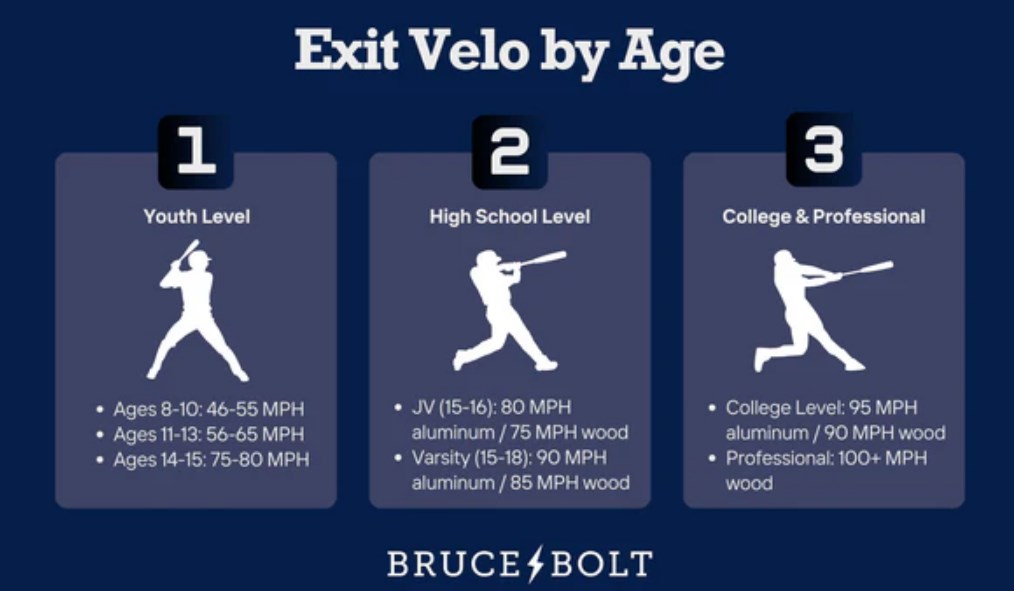


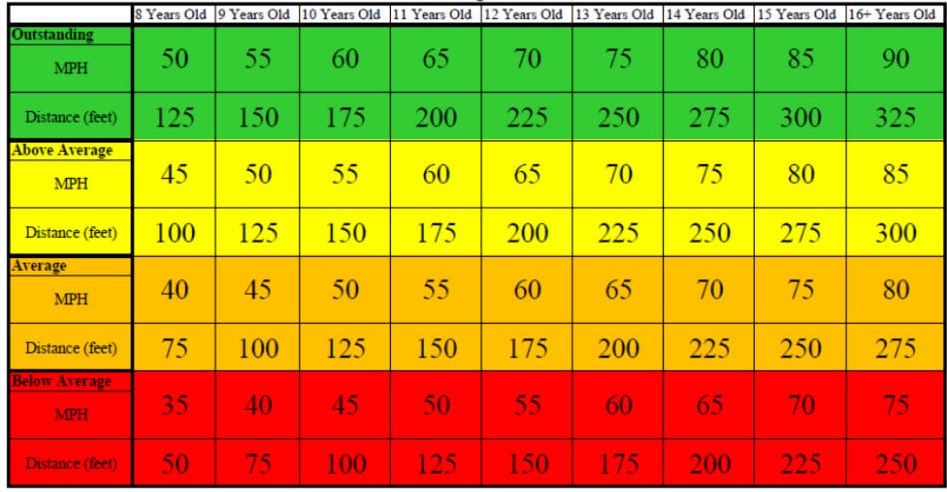
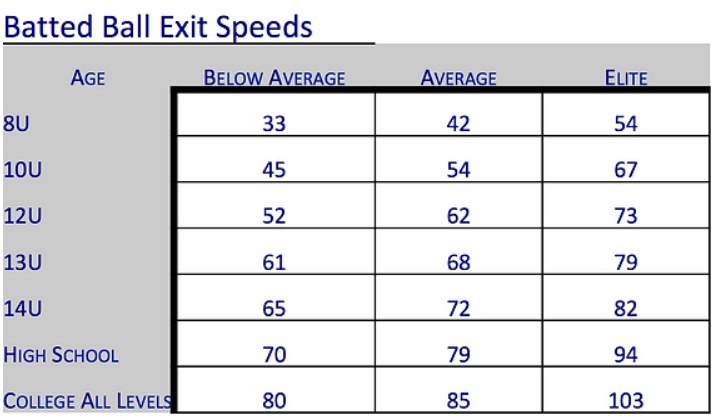
 | Sitemap | Mail
| Sitemap | Mail